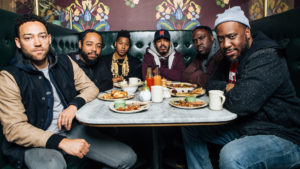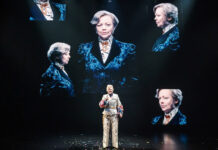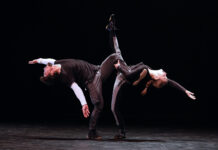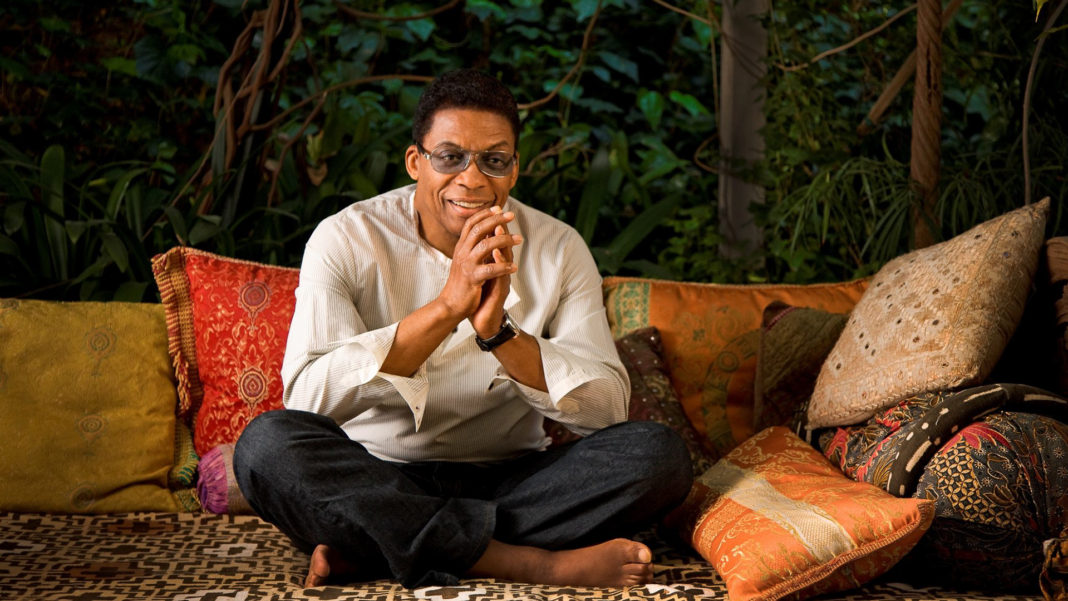Jazz saxophonist and composer Wayne Shorter once said, “The paths you take may present challenges, which are in essence, opportunities for a life-expanding adventure beginning with ‘Once upon a Time.’ Go for it! See you in the future.” If anyone has embraced that quote it is his good friend, Herbie Hancock. On Wednesday at the Hollywood Bowl, Hancock will be headlining a concert where he will showcase not only his work, but that of other musicians he feels represent the Next Generation of jazz.
Hancock, who serves as the Creative Chair for Jazz with the Los Angeles Philharmonic, is a 14-time Grammy Award winner, an Oscar winner (for Round Midnight), and a musician who first came to prominence as a member of the Miles Davis Quintet of the mid-60s. He has always been a very forward-thinking musician. To go through his career would take up three columns. Suffice to say from his time with Davis, to his hits like “Rockit” through to River: The Joni Letters, which won the Album of the Year Grammy Award, his career has been as adventurous as it has been diverse.
With that in mind, I spoke to Hancock who was in Denver as part of his summer tour he’s doing with Kamasi Washington. We spoke by phone about this unique concert at the Bowl, the future of jazz and more.
When you get involved with the LA Phil in putting a show like this together, what is the main criterion you use in selecting artists to represent the “Next Generation of Jazz?”
It’s a very difficult questions to answer. Because many times I ask other people about other artists, about people maybe I don’t know about. I ask their opinion about who they’ve heard on bass or whatever. What I’m looking for, and hope to achieve, is an openness. That’s the main quality. To be open and to try to create new paths to do things you haven’t done before.
Everyone in my band has that. There’s a certain excellent that they have. My drummer, Vinnie Colaiuta, if you get lost, he’s got your back. What we have in this band is we have each other’s back. No matter what happens, we try to make everything work, but we try to explore and bring new things to the table. It’s like food, you don’t want to eat the same thing every night.

How did you select R+R=Now and Phoelix to represent, with you, a glimpse into the future of jazz.
I have been trying to keep up over the past few years with what some of the young jazz musicians are doing. I’m seeing that there are lot of collaborations they are doing which reminds me of what I was doing when I was younger. There are so many new things that are happening. Change is happening exponentially. I don’t want to be left in the dust.
What started me up pursuing young musicians the way I am now is when I was turned on to Kendrick Lamar’s To Pimp a Butterfly. I went to [producer/rapper/musician] Flying Lotus first and said what are you young people doing? I found out it was Terrace Martin [also a producer/musician/rapper] who was the engine behind the arrangements. He was the major producer of that album and also DAMN. I was dying to meet him. I was doing a shoot for a Blue Note documentary [Beyond the Notes] with me and Wayne Shorter and Robert Glasper. He called Terrace and we talked and I just had the feeling that this could be a good synergy.
[Let me connect a few dots here. Robert Glasper formed R+R=Now. Terrace Martin is part of that band. Glasper, along with Washington, played on To Pimp a Butterfly – as did Thundercat who was recently added to Wednesday night’s concert. Martin is currently producing Hancock’s newest record.]
Getting back to what this concert is about, tying it together, I have actually appeared on Robert Glasper’s stage once or twice. It was a small club in Los Angeles – the Peppermint. He had this event and I came over there and he pulled me up on stage. They do that. R+R=Now does that. The whole feeling is that you are sitting in a club and that the audience is really very much a part of the music. You get the feeling that almost anything could happen. That’s why I could identify with it. I’m trying to capture, hopefully, a bit of that so there are little surprises and people don’t know what will happen. I’m trying to incorporate that spirit because I really feel like that’s a good way to open the door for the future.
You said a couple years ago that in choosing to record you ask yourself, “what is it you want to encourage in other people.” With this show, how do you answer that question? That purpose?
I always hope that energy will be in the room so to speak when my name is on the marquee. I really hope that we can not only encourage each other, which is really built into the fiber and ethics of jazz, but that we can encourage the audience. The audience is the plus member of the band. That’s why every night – with a different audience – the performance is different.
Yes it is going to vary because we are improvising, but the influence of, not just the bodies, but their humanity, that’s what pervades the whole scene when we are performing. I just want to open myself up and to encourage the other band members to open themselves up to it and to feel that collective spirit.
Our goal, to quote the spirit of some of the words of Wayne Shorter, we are up there naked really. Perhaps we have some melodies and harmonies, but we are doing something different every night. It takes a lot of courage to do that.
For tickets go here.
On Tuesday we will have part two of our interview with Herbie Hancock where we discuss social justice and jazz, the link between hip-hop and jazz and how he’d like his career perceived in the future.
To read part 2 of our interview with Herbie Hancock go here.
Photo of Herbie Hancock by Douglas Kirkland/Courtesy of the HerbieHancock.com
Photo of R+R=Now by Todd Cooper/Courtesy of Blue Note Records











